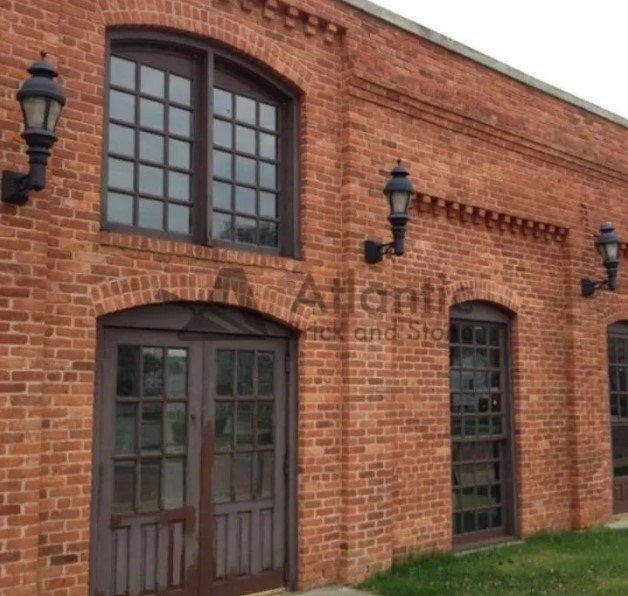You’ve got to admire those old brick buildings that have stood the test of time, connecting us to architects from centuries past. However, all that history takes its toll over the years. If you’ve got an old brick home or building that needs some love, this guide is for you. We’ll go over everything you need to know to bring your masonry gem back to life while keeping its charm intact. From analyzing problems to selecting the right materials and methods, we’ll make sure you’re prepared to carefully restore your brick structure like a pro. Let’s get started!

Historic masonry structures, like your old brick building, hold immense cultural value. Taking the necessary steps to properly restore and preserve the historic brickwork will help maintain its significance for decades. The benefits are:
Restoring an old brick building rather than letting it deteriorate can significantly increase its market value. Done right, a restoration can potentially add tens of thousands to the sale price if you decide to sell. Even if you keep the building, you’re making an investment in an appreciating asset.
By addressing issues early before they get worse, you’re preventing expensive problems down the road. Small repairs today can save you from major reconstruction costs tomorrow if water damage or structural problems are left unchecked. A restored building needs less ongoing maintenance too.
If your building has architectural or historical significance, a careful restoration following preservation guidelines maintains that heritage for future generations. You’re playing an active role in protecting our shared cultural history. Communities often appreciate such stewardship efforts.
So in the end, restoration pays dividends through higher property value, avoiding bigger future bills, preserving community heritage, and the pride that comes from breathing new life into historic buildings. The upfront investment is well worth it for the long-term returns.
Before beginning any restoration project, conduct a comprehensive assessment of the building’s condition. A qualified masonry repair contractor can accurately identify issues like cracks, water damage and brick or mortar deterioration. Ignoring underlying problems will only lead to further expensive repairs in future.
It’s crucial to determine the scope of necessary work by analyzing both the exterior and interior of the structure.
Many issues lurk behind decorative finishes and require inspection. Substandard or failing materials may need full replacement. Structural evaluations verify load-bearing components can safely support restoration.
Common problems seen in aging brick include loose or spalling bricks, damaged or missing mortar joints and moisture intrusion signs. Issues left unaddressed will progressively worsen. Investing in a detailed pre-repair evaluation saves money and hassle versus overlooking something that later demands major reconstruction costs. Only licensed masonry contractors can properly diagnose complex masonry problems and design code-compliant solutions.
But before starting restoration work, you must understand the following Dos and Don’ts.
When restoring old brick buildings, certain best practices should always be followed to avoid common pitfalls. Here are some key do’s:
To avoid restoration mistakes, certain practices should always be avoided when working on historic brick structures. Here is some key don’ts:
Specialized masonry restoration techniques address issues while retaining original fabric. Proper methods minimize repairs and maximize historical accuracy.
Traditional cleaning involves soft natural bristle brushes and biodegradable cleaners. Low-pressure water rinsing removes grime without damaging aged brick faces.
Skilled masons precisely extract deteriorated or damaged bricks using pneumatic tools. Replacement units are dry-laid for evaluation before trowel-mixing new lime mortar and installing permanently.
Brickwork Repointing replaces cracked, missing or crumbling mortar joints in a process called ‘raking out.’ New mortar is hand-tooled to exactly replicate aged surrounding bonding material.
Following brick restoration, coatings like waterproofing consolidate weak surfaces. Permeable formulas allow moisture evaporation to protect against spalling and freeze-thaw damage long-term.
Regular maintenance prevents deterioration recurrence. Inspecting for cracks, efflorescence or other material loss every few years and addressing small problems promptly forestalls future expensive repairs.
Old brick buildings deserve respect for withstanding the test of time through generations of use. Home and building owners can show this reverence through diligent restoration following best practices. Upholding structural integrity with appropriate materials preserves these landmarks as tangible parts of our shared cultural heritage. Thorough planning, expertise and avoidance of risky techniques keeps their enduring charm on prominent community display. With continued maintenance, thoughtfully restored masonry will serve communities proudly for many decades.
GET STARTED
Create stunning structures with our residential and commercial masonry services in Fredericton. From meticulous designs to the completed build, our process is professional and rewarding, and we can’t wait to build your dream with you.
Atlantic Brick and Stone, one of the best masonry contractors in Fredericton, NB
Contact
8 Muskie Street, Lower Kingsclear, New Brunswick E3E 0E7, Canada